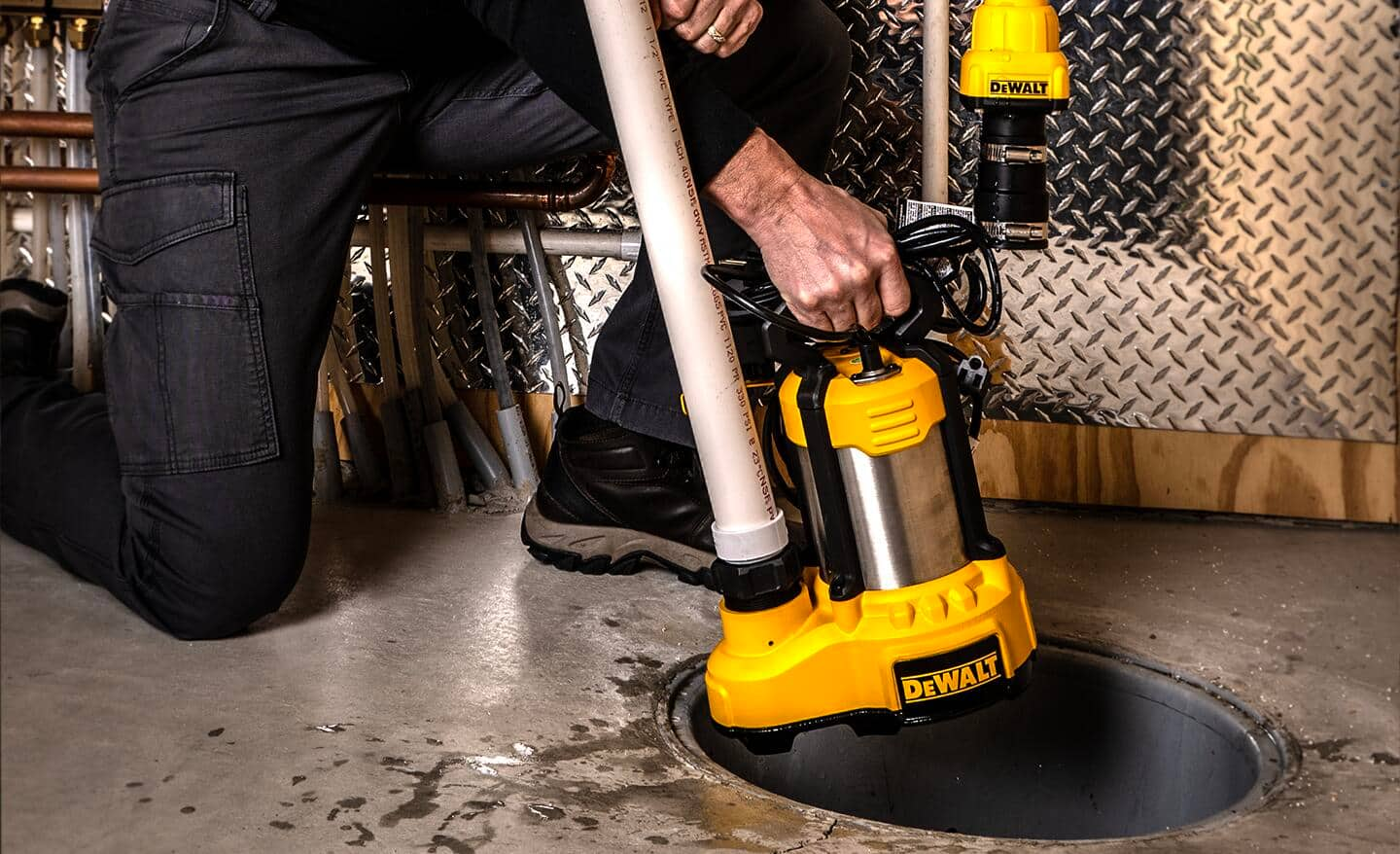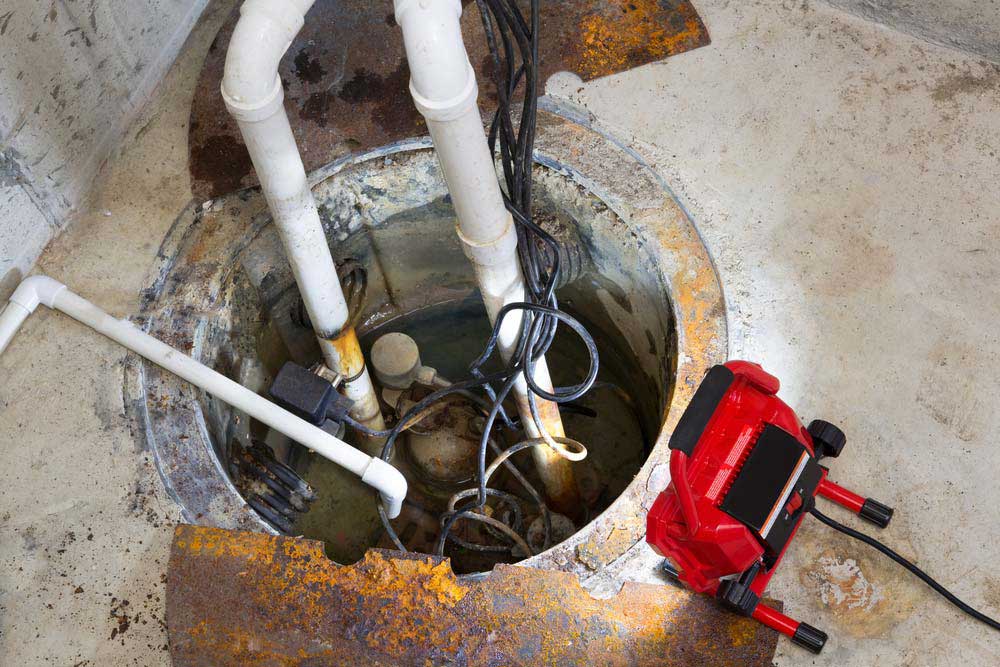Useful Tips for Servicing a Sump Pump
Useful Tips for Servicing a Sump Pump
Blog Article
The publisher is making a number of good pointers regarding Steps to Cleaning Your Sump Pump Properly as a whole in this post which follows.

Sump pumps are crucial elements in several homes, particularly in locations vulnerable to flooding or excessive moisture. They help stop water damage by effectively eliminating excess water from basements or crawl spaces. However, like any other appliance, sump pumps require normal maintenance to guarantee they function successfully when needed one of the most. Cleaning your sump pump is a vital part of its maintenance, and recognizing exactly how to do it correctly can conserve you from costly repairs and possible disasters.
Introduction
Keeping a tidy sump pump is vital for its correct performance and long life. Ignoring this vital task can result in clogs, malfunctions, and inevitably, water damages to your building. As a result, discovering exactly how to cleanse a sump pump is crucial for property owners who count on these gadgets to maintain their basements completely dry and safeguarded.
Recognizing the Sump Pump
Prior to diving right into the cleaning procedure, it's important to have a fundamental understanding of how a sump pump functions. Usually installed in a pit or basin below the cellar floor, a sump pump contains several vital elements, including a pump, a float button, and a discharge pipeline. When water accumulates in the pit, the float button turns on the pump, which after that pumps the water out via the discharge pipe, away from the structure's foundation.
Signs of a Dirty Sump Pump
Knowing when your sump pump needs cleansing is important for preventing potential malfunctions. Some usual signs that suggest a filthy sump pump include strange sounds throughout procedure, reduced water circulation, and visible particles in the pit. If you observe any of these signs and symptoms, it's essential to clean your sump pump promptly to prevent any kind of additional concerns.
Planning for Cleansing
Before you start cleansing your sump pump, it's necessary to take some safety preventative measures. Beginning by turning off the power to the pump to avoid any type of electrical mishaps. In addition, wear suitable protective gear, such as handwear covers and safety glasses, to protect on your own from dust, debris, and prospective microorganisms.
Detailed Guide to Cleaning a Sump Pump
Shutting Off the Power
Begin by disconnecting the power supply to the sump pump to avoid any type of accidents while cleansing.
Eliminating Particles and Dirt
Use a bucket or an inside story to eliminate any visible debris, dirt, or debris from the sump pit. Dispose of the debris effectively to prevent it from blocking the pump or the discharge pipeline.
Cleaning the Pump and Float Change
As soon as the pit is free from particles, thoroughly eliminate the pump from the pit. Inspect the pump and the float switch for any indications of damage or wear. Use a soft brush or towel to clean the surface areas and eliminate any kind of accumulated crud.
Purging the System
After cleaning up the pump and float switch, purge the sump pit with tidy water to remove any staying dust or debris. This will help ensure that the pump runs smoothly and effectively.
Checking for Proper Functioning
Prior to re-installing the pump, carry out a quick test to make sure that the float switch turns on the pump appropriately. Pour some water into the sump pit and observe the pump's operation. If whatever is operating appropriately, you can reconstruct the pump and reconnect the power supply.
Upkeep Tips to Maintain Your Sump Pump Clean
Along with periodic cleansing, there are numerous upkeep tips you can comply with to maintain your sump pump in optimum problem:
Final thought
Cleaning your sump pump is an essential aspect of its upkeep and makes sure that it operates successfully when you require it the most. By complying with the actions outlined in this overview and including regular upkeep into your regimen, you can extend the lifespan of your sump pump and secure your home from water damage.
6 STEPS ON HOW TO CLEAN A SUMP PUMP PROPERLY
UNDERSTANDING SUMP PUMPS
Your sump pump plays a crucial role in protecting your home by managing and removing excess water. It primarily functions as a “shield”, guarding your basement against the damaging effects of water accumulation. The pump is housed in a sump pit in the lowest part of your basement, and its job is to pump out any water that collects there.
During heavy rainfalls or when snow melts rapidly, water can infiltrate your basement, posing potential risks like flooding, structural damage, and harmful mold growth. Here, the sump pump springs into action, pumping out the intruding water and directing it away from your home.
SAFETY FIRST
Before cleaning, remember to prioritize safety. Disconnect the sump pump from the power source to prevent any accidental electric shocks. Also, wear sturdy gloves to protect your hands from any sharp or dirty components within the pump.
REMOVE THE SUMP PUMP
After ensuring your safety, the next step is to remove the sump pump from its pit. Doing this might require careful maneuvering as you don’t want to damage any pump components. Once removed, clean the sump pit to remove any accumulated debris or sludge.
INSPECT THE PUMP
Inspect the pump for any visible signs of wear or damage. Check the power cord, float switch, and impeller housing. If any components look worn out or damaged, consider replacing them to ensure optimal performance.
CLEAN THE PUMP
Thoroughly clean the pump with warm, soapy water. Make sure to rid it of any dirt, gravel, or other debris that might impede its performance. You can use a toothbrush to clean the small, hard-to-reach parts of the pump.
REINSTALL THE SUMP PUMP
Reinstall the pump into the sump pit Make sure it’s positioned correctly to remove the water effectively Once it’s back in place, reconnect it to the power source TEST THE PUMP
Finally, pour some water into the pit to ensure the pump works correctly. It should start automatically and begin pumping out the water; if it doesn’t, check the power source and the positioning of the pump.
Remember, while cleaning your sump pump is an essential part of home maintenance, hiring a professional plumber for a thorough inspection and cleaning at least once a year is also important. This will ensure that your pump is in optimal condition, ready to protect your home from potential water damage.
BEST PRACTICES FOR CLEANING SUMP PUMP DISCHARGE PIPES
Regular Inspection: Regularly inspect your discharge pipes, especially during heavy rainfall or snowmelt periods. Look for any signs of blockage or damage. Early detection of problems can prevent serious issues down the line. Periodic Cleaning: Over time, sediment and debris can accumulate in the discharge pipes, impeding the flow of water. Regular cleaning helps keep the pipes clear and functioning efficiently. You can use a high-pressure water jet to effectively clean the pipes. Insulation During Winter: In colder climates, discharge pipes can freeze, blocking the outflow of water. Protect your discharge pipes from freezing temperatures by insulating them with foam pipe insulation. This will ensure the sump pump can continue to discharge water even in freezing conditions. Proper Positioning: The discharge pipe should be positioned to direct water away from your home’s foundation. Improper positioning can lead to water seeping back into the basement. Ensure the pipe is long enough and angled correctly. Installation of a Check Valve: A check valve prevents water from flowing back into your sump pit after the pump has pushed it out. Installing a check valve helps maintain the efficiency of your sump pump and reduces the risk of flooding. Minimize Pipe Turns: Every curve or turn in the discharge pipe can decrease the efficiency of water flow. By minimizing turns and bends in your discharge pipe, you can increase the efficiency of your sump pump. https://www.fullspeedplumbing.com/how-to-clean-a-sump-pump-properly9999/

Do you really like more info about Keep Your Sump Pump Clean, It'll Keep You Dry? Create a review down below. We'd be happy to see your opinions about this page. Hoping to see you back again in the future. For those who enjoyed our post if you please be sure to pass it around. Thank you so much for your time spent reading it.
Book An Estimate Now Report this page